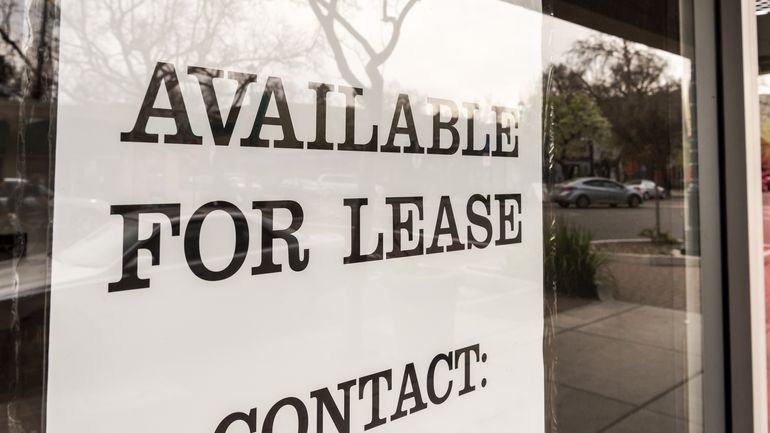Dining out is more than great food.
With food delivery apps growing in popularity, it’s more important than ever for restaurant owners to create a dining experience that allows diners to feel like getting dressed and going out is worth the effort.
A great experience for diners begins before they even arrive at your restaurant. They need to easily locate your venue and be assured that they’ve come to the right place for their meal the second they step through the door.
This is why selecting the right space to whip up your specials and welcome your guests is everything when it comes to your restaurant’s success.
No pressure.
In this article, we’ll help you find the perfect location for your new restaurant. You’ll learn:
- How to prepare for your search process
- What to look for in a lease that fits your needs
- How to find the perfect space in a crowded – or sparse – marketplace
- The best negotiation tips when it’s time to sign a lease
Be Prepared: Your Restaurant Pitch Deck
Like most things in life, it pays to be prepared when beginning the hunt for a restaurant for lease. In the same way financial institutions require a business plan before they extend funding, commercial landlords may look for similar documents to help assure them you’re good for your rent payments.
Los Angeles-based Restaurant Real Estate Advisors suggests putting together a “pitch deck” to show potential landlords what you have in mind for the space. “A pitch deck is a number of slides that summarizes your restaurant. Include at least one year of financial projections and a bio for you and your partners if applicable,” they write.
Your pitch deck can also serve as your own North Star as you prepare for your restaurant. In addition to the financial information, you might include goals for the first few years. Think about:
- What kind of food do you want to serve – and at what price point?
- Who are your ideal customers? What will they love about your restaurant?
- What is the service like in your restaurant? Do you have a uniform? How will staff welcome guests?
- What is the ambiance in your restaurant? Include colors, lighting, and décor that contribute to the vibe of your ideal space.
- What do you want to be known for when it comes to food, experience, service, décor?
- What kind of profit are you looking to make in your first year? Second year? And beyond?
These slides can be your vision board and help you imagine how you’ll transform any space into the restaurant of your dreams. When you’re looking at business spaces for rent, you can refer to this document to determine whether it’s a good fit for what you have in mind.

11 Things to Consider When Looking for a Business Space to Rent
Finding the right restaurant real estate is like selecting the right place to live. It needs to meet your needs and be within your means. Here are some helpful criteria to consider as you search.
1. Budget
Your budget will, in large part, depend on your revenue minus other operating costs. Your total occupancy cost – including things like rent, utilities, insurance – should not exceed 6 to10% of your gross sales, according to Restaurant Real Estate Advisors.
This is another great reason to invest the time and energy into creating financial projections that are as accurate as possible. And when it comes to signing a lease, it’s best to err on the side of caution and take a space that costs a little less than what you think you can afford. Why? Your projections could be off, so you want some wiggle room with expenses. Also, depending on the terms of your lease, your rent could go up while you occupy that space, so you want to make sure you can handle some level of increase.
2. Location and Demographics
Understanding who you’re serving – and what kind of customers you want to attract – is a big part of selecting the location of your restaurant. For example, if you specialize in breakfast and lunch, you’ll want to situate yourself in an area of town where 9 to 5ers are looking for great eats. If you’re planning more of a romantic bistro vibe, you’ll want to be where people congregate at night.
Once you’ve narrowed down a few promising sites, drop by the area at different times of the day to analyze the traffic. You might discover some interesting surges that could help you modify your menu slightly – your lunch crowd could also become a bustling happy hour.
3. Neighborhood and Neighbors
Take a close look at what else is happening in the neighbourhood you’re considering. What other businesses are in the area, especially within two blocks in any direction? Do they complement your restaurant? Movie and stage theaters go great with restaurants; slaughterhouses…not so much.
What are the demographics of the closest residential block? What’s the history of the neighbourhood – is it gentrifying or deteriorating? If it’s on the rise, what kind of construction is expected to take place in the area in the next few years, and does it have the potential to affect your business?
4. Size
Your business plan will undoubtedly include a rough idea of the square footage required to run your restaurant. While it is possible to size up or down, it helps to seriously consider only the business spaces for rent that fit within your specifications.
Too big and you’ll have to furnish and pay for utilities, taxes and insurance for those extra square feet. Too small and you may find yourself squishing your servers, cooks and customers and having zero room for growth.
A great way to gauge size is based on the amount of seating you want to have at your restaurant. When you know how many tables and seats you want set up, you can start to work backwards to size out your space. There’s no perfect formula, but there are some recommendations you can follow to start:
- The max space you want for one person is 18 square feet
- The minimum amount of space you want for one person is 10 square feet
Use these numbers to start working out how much restaurant space you need – and that you’re making the most out of it!
5. “The Bones”
We often hear contractors and structural engineers referring to “the bones” of a building. This refers to the structural integrity – like the floors and walls – but can also include elements like electrical and plumbing.
When you’re getting serious about a rental space, it’s beneficial to hire a professional, third-party inspector to take a closer look at how it’s constructed. The last thing you want is to invest in a rental that constantly blows fuses, has clogged toilets and requires costly maintenance.
6. The Competition
Most large cities have clusters of dining and entertainment establishments strewn in neighbourhoods across the metropolis. Believe it or not, being closely situated to other restaurants can be good for business. Diners usually arrive in these areas en masse, which gives you a better shot than if you were located in an isolated area. And your business will no doubt benefit from the overflow of other restaurants.
The key to checking out the competition is to assess which ones complement your business and which are a threat. If you’re an authentic Italian kitchen sitting in a row of Italian restaurants, you’re going to have a harder time standing out. However, if the restaurants that share your street have different cuisines or cater to different demographics, you could offer a brand new option.
This doesn’t mean you have to set up in a restaurant-dense neighborhood to find success. People are more willing to travel to try good food now than ever before – which is why there’s been major growth in the idea of ‘destination restaurants’. These restaurants have a strong enough appeal to draw diners from beyond their immediate community.
7. Accessibility
If you’re looking at a new space, you’ll want to consider how accessible it is for all diners – newer building codes may even require accessible entrances, exits, and bathrooms for patrons of all abilities.
It’s important to check with your local state health inspector to be sure all of the elements of the potential space are within legal regulations.
8. Visibility
Very few restaurants can afford to be cute about hiding behind confusing or non-existent signage – or be tucked away down a set of stairs or behind another building.
There are enough barriers in the way of new restaurant owners. It’s advisable to invest in a commercial space that will allow you to get the attention of passersby and make it easy for people seeking out your restaurant to find you.
9. Parking
The issue of parking depends on where you’re located, but it is a consideration just about everywhere. If you’re looking to open up in an urban centre with great public transit options, parking may be less of a concern. But if you’re in a suburb where your ideal customers drive almost everywhere, you need to make sure they have a place to put their cars.
Depending on the zoning of your restaurant, you may be required to have anywhere from two to 15 parking spaces per 1,000 square feet. Check with your municipality to be sure.
10. Safety
Similar to accessibility considerations, safety requirements are always evolving. If you’re taking over a small restaurant space that’s been in use for decades, you’ll want to have an inspector double check to determine if it’s up to code. The same goes for taking over a business space for rent that’s been used for another purpose.
Elements like a fire suppression system in the kitchen and a sprinkler system throughout the restaurant are required in many jurisdictions. A building inspector will be able to advise you on what’s needed to make it safe.
11. Room to Grow
Entrepreneurs are more optimistic than non-entrepreneurs, according to Psychology Today. It’s helpful to channel that optimism into thinking about the future. It’s smart to find a space that fits your needs today – but what about tomorrow? Is there potential to grow, even a little bit, in your space?
The flexibility to add another table or two or expand your kitchen slightly will help you stay within your means for longer.

How to Find Restaurant Real Estate
There are a few ways to find for the restaurant space of your dreams. They include:
Visit Your Coveted Area
You probably have a good idea of where you’d like to set up shop. The best way to see what’s available is to pound the pavement in the area – and surrounding areas – and look for “For Lease” signs. Try not to set your sights on just one neighbourhood. Be open to other up-and-coming areas that may be more financially practical.
Get a Commercial Real Estate Broker
Professional help usually makes the process easier. However, it’s important to note that most brokers work for the property owner or landlord. That means their true loyalty lies with the seller. And if they work on commission, they won’t be motivated to help find you a lower-priced rental.
Despite the drawbacks, it may still make sense to work with a real estate broker. They typically have access to information you won’t find anywhere else and you’ll save a ton of time weeding out properties that aren’t a good fit! Ask for referrals from other restaurateurs and find someone you feel you can trust. And try to work with the listing agent for each property rather than one who will show you around everywhere.
DIY Online
Most major cities have their own commercial real estate listings, usually online. Nation-wide websites include:
It’s important to take your time when negotiating a restaurant lease. Consult other experts, take time to consider offers, and don’t be afraid to ask for more than what you want so that there’s room to haggle.
Investing in restaurant real estate is a big move that requires equal parts courage and faith. But the more educated and realistic you are about your needs, the more successful you’ll be.
Download our free inventory template
Sign up for our free weekly TouchBistro Newsletter







